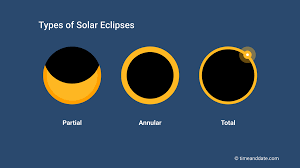
On August 21st, 2017, 9-year old Cindy excitedly wandered through the streets of Vancouver, Canada, clutching her solar viewers as she awaited her first ever solar eclipse. As a large crowd started to gather outside, my family and I witnessed a truly magical event. Even today, I still vividly recall watching the sun gradually surrendering its brilliance, morphing into a mesmerizing crescent before ultimately disappearing from view. The whole world went dark, and the familiar hot, humid summer air of Vancouver transformed into a chilly twilight.
A solar eclipse is when the moon is directly between the sun and Earth, obstructing the sun and casting a dark shadow towards Earth. Although there are around 2-5 partial solar eclipses every year, where the moon partially obscures the sun, a total eclipse (where the sun is completely covered) only happens every 18 months and is visible from varying locations in the world. For those who missed viewing the solar eclipse in 2017, it is coming back this year on Monday, April 8th, 2024 at 3:18 PM EDT right in New York City! According to Time and Date, the approximately 4 minute phenomenon only happens in the same location every 375 years. In New York City, one will be able to see 90% of eclipse obscuration, meaning that the Moon will cover at most 90 percent of the Sun. Therefore, New York City residents will witness a deep partial eclipse right at their doorsteps, making it a once-in-a-lifetime experience.
To safely observe the eclipse, appropriate eye protection is essential. Just like the solar viewers (different from sunglasses, as they are over a thousand times lighter than solar viewers) I wore watching my first solar eclipse, one should wear them to protect their eyes from the sun's rays during this eclipse. New York state offers free “I Love New York'' solar viewers at various New York state welcome centers. The New York City location is Moynihan Train Hall – MTA Long Island Rail Road Ticket Windows (421, 8th Avenue). In addition, all public libraries throughout New York City are giving away free eclipse glasses on a first-come, first-served basis, so those who are close can stop by to get free viewers. If you are not close to a library, do not fret because viewers can also be ordered online for around 3 dollars. An alternative to solar viewers is turning your back away from the sun and watching a projection. Contrary to popular belief, peeking at the sun through a pinhole is not a safe way to view the eclipse according to the National Eye Institute.
The eclipse will begin at 3:18 and climax at 3:29. I encourage everyone to go to Central Park or the 4th floor terrace after school. Let's seize this rare opportunity to witness one of nature's grand spectacles together!
Happy viewing!
- Cindy Wang '26